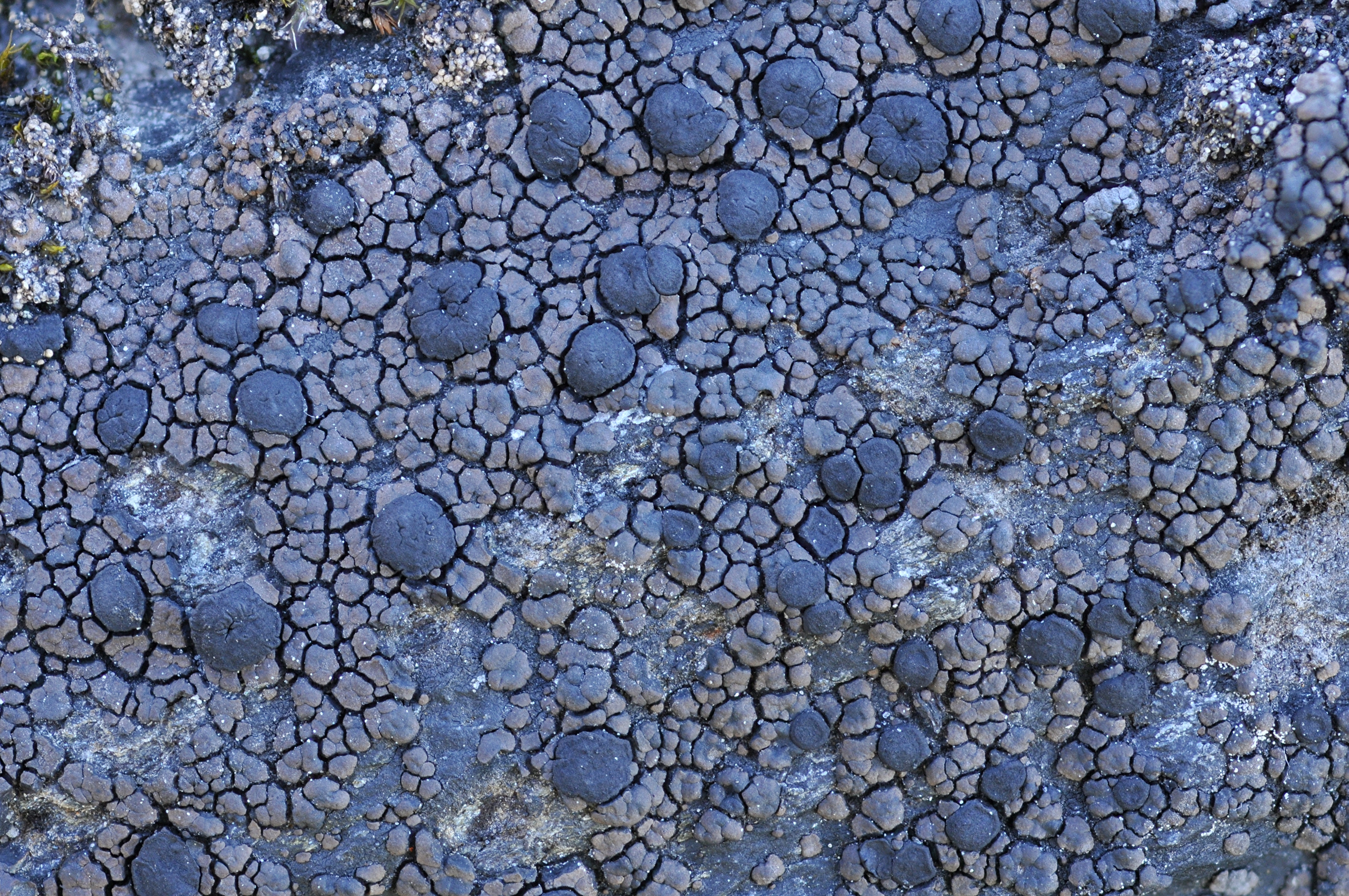Rhizocarpon hochstetteri
- Innhold
- Morphology
- Chemistry
- Habitat
- Comment
- Look-alikes
Morphology
Thallus rimose to areolate, up to 10 cm diam.; hypothallus usually poorly developed, black; areolae up to 0.5 mm diam., medium brown to dark brown, usually with a greyish tinge, dull, mainly contiguous, angular, plane to weakly convex, often thin; medulla KI–. – Apothecia up to 0.7 (–1.5) mm diam., black, epruinose, mainly orbicular or often slightly flexuose, remaining plane, with a narrow and persistent margin; excipulum brownish black throughout or paler brown in inner part, lacking crystals, K–; hypothecium dark brown, K–; hymenium colourless or green (especially in upper part); epihymenium dark brown, rarely containing crystals dissolving in K, K–; paraphyses with a sharply delimited, dark brown pigment cap in the apical cell; ascospores 8 per ascus, 1-septate, persistently colourless or becoming faintly brown with age, 17–28 × 9–13 µm. – Conidiomata not seen.
Chemistry
No lichen substances or rarely stictic acid; spot tests: medulla PD– and K–, or rarely PD+ orange and K+ yellow, C–.
Habitat
Common on siliceous rock, especially on moist or periodically irrigated rock walls.
Comment
The few specimens containing stictic acid have thicker areolae, a higher hymenium, and possibly larger ascospores than the acid deficient strain. The species is recognized by the rimose/areolate, brown, non-amyloid thallus with narrowly marginate, often slightly flexuose apothecia, the sharply delimited pigment cap in the apical cell of the paraphyses, and the 1-septate, hyalin or faintly brown ascospores. In R. badioatrum, the areolae are more convex, the paraphyses more diffusely pigmented, and the ascospores soon become dark brown.

